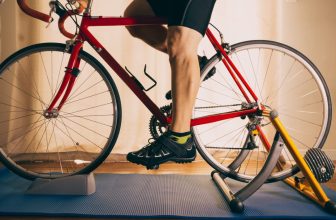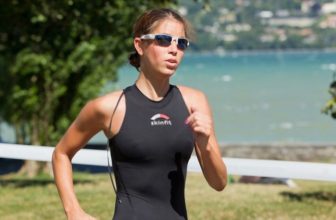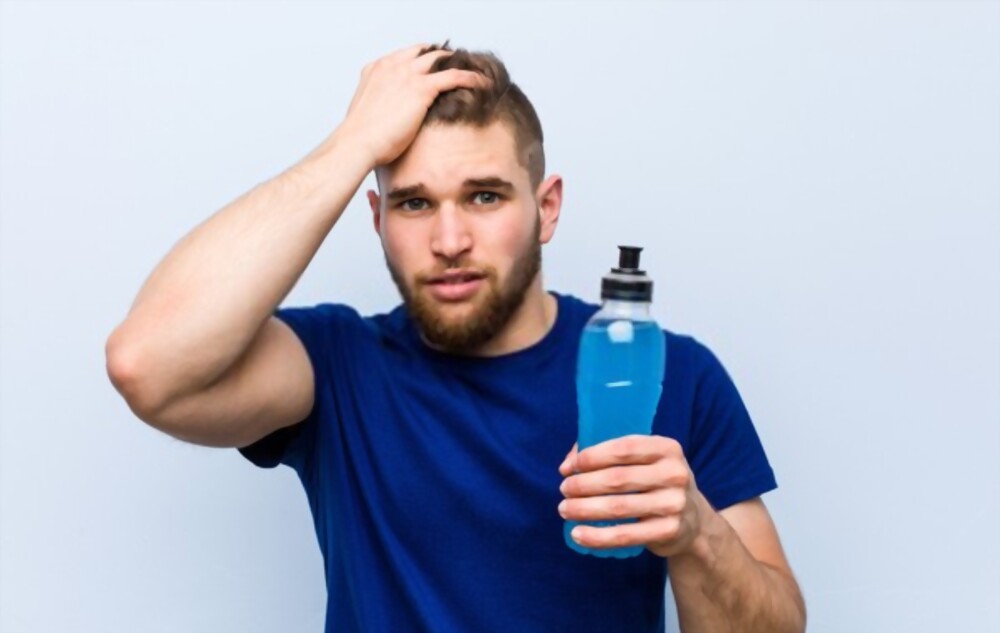
Being a runner can be one of the most rewarding experiences. Many people enjoy running, and many even love it so much that they want to make it their career. This article will help you identify which six common deficiencies you may have so that you know how to improve your performance and prevent injury.
6 Common Deficiencies In Runners
1. Choose the wrong shoes

wrong shoes
Problem: This is the first running mistake most people make. Wearing old shoes or wearing the wrong type of shoe, shoe size, and running style can cause running injuries. The improper footwear might result in numerous injuries, including stress fractures, over-pronation, and knee injuries.
Solution: You need to go to a running store, where the salespeople can assess your running and foot patterns most accurately. They will then determine if your foot type is inside, outside, or normal; they will make shoe recommendations for you. Once you have a pair of shoes that are right for you, make sure you exchange them for a new pair of shoes every 480-560 km, as the cushioning of the shoe will wear out and can lead to injuries.
2. Exceeded stride limit
The Problem: The stride limit is the distance between your two feet during each step; it is affected by your height, flexibility, and speed. One of the most common mistakes in traumatic running is overrunning or lowering the front heel with the foot in front of the body’s center of gravity. Some runners believe that a longer stride will increase their running efficiency or speed, but this is untrue. Excessive running wastes energy because your feet are in contact with the ground too far from your center of gravity, which increases shock and reduces performance. It can also lead to injuries such as shin splints.
Solution: Make sure you don’t land on your toes. This is especially important when running downhill. Focus on landing on the midsole, placing your feet directly under your body during each step. A low, short swing is key to keeping your stride short and close to the ground. As if you were stepping on burning coals, keep your steps light and swift.
3. Wrong running posture causes injury
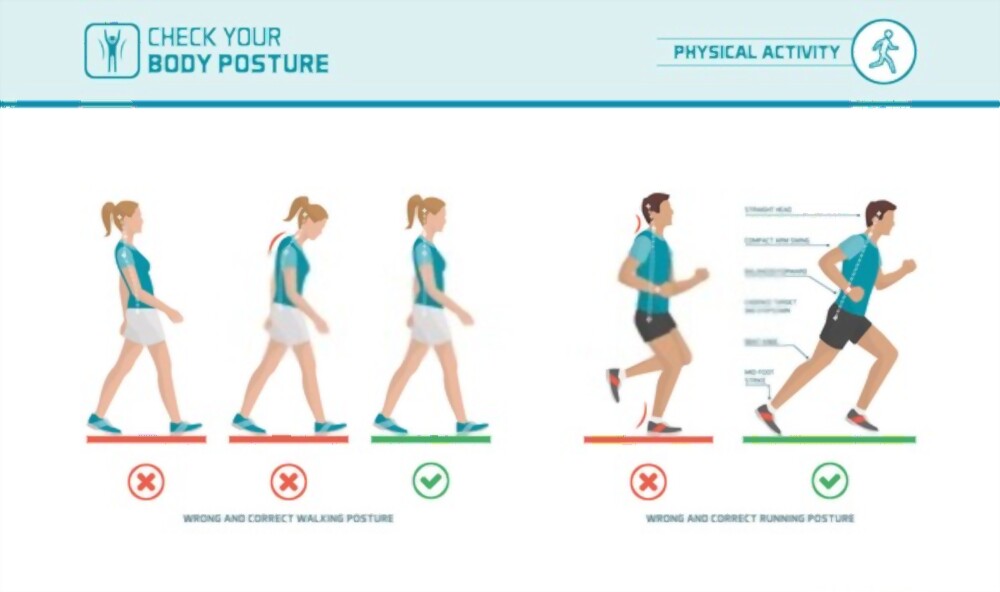
Wrong running posture causes injury
Problem: The most frequent error made when running is this. Poor posture and faulty mechanics can lead to injuries, problems, and poor performance when running. Some runners swing their arms out to the sides, making it easier for you to sag and breathe unproductively. Some beginners tend to put their hands in front of their chest, especially when they feel tired. You’ll get more tired holding your arms that way and start to feel a stretch in your shoulders and neck.
Solution: The solution is to keep your hands at waist level, in the right position where they can lightly touch your hips. As if you were stepping on burning coals, keep your steps light and swift. To make your arms swing back and forth, rotate them at the shoulder rather than the elbow. Imagine a vertical line dividing your body — your hands should not be crossed. Maintain a straight posture. Your head should be up, back straight, and shoulder level. When you’re tired at the end of a run, you will often bend over a bit, leading to pain in the hips, shoulders, and lower back. When you feel yourself sagging, let puffing out your chest.
Besides that, a slight lean forward with your neck, shoulders low, elbows close to the body with hands relaxed will help you achieve a more efficient stride.
4. Not drinking enough water
The Problem: Drinking water will help you during a run because it helps you maintain your body temperature, so your muscles will not get cold. Especially before and during long runs, you must drink enough water and stay hydrated. Many runners underestimate the water they lose while running and don’t drink enough water because they worry about possible hip pain. The harm is that they become dehydrated, which can harm their performance and health. What will happen if you work hard and Exercise without drinking enough water? Let’s see. The first thing that happens is that you get tired more rapidly, your running speed will slow down, and you will feel tired. If this happens regularly, you can easily develop a heat stroke and risk dying from the heat.
Solution: Running enthusiasts should be mindful of what and how much fluid they consume before, during, and after their workout. Here are some simple rules for staying hydrated and running:
An hour before you start running, try to drink 0.48 to 0.72 liters of water or other non-caffeinated liquid. Stop drinking water at the time of your run so you can avoid having to stop to go to the bathroom while you run. To ensure you’re well-hydrated before you start running, you can drink an extra 0.12 to 0.24 liters right before you start. Drink the right amount of water at your own pace. This varies by condition, but generally, runners faster than 13km/h will absorb between 0.18 and 0.24 liters of water every 20 minutes, and slower runners will consume 0.12 to 0.18 liters every 20 minutes. During longer workouts (90 minutes or more), Sports beverages like Gatorade should be consumed along with some water to replenish lost sodium and other minerals (electrolytes). After your run, remember to rehydrate with water or a sports drink. If your urine is dark yellow after running, you need to continue to rehydrate.
5. Wearing inappropriate clothes
The Problem: Some runners dress inappropriately for the weather, either by wearing too much or too little clothing, making them uncomfortable and putting them at risk for heat- or cold-related illnesses. Not wearing the right clothes when running can be detrimental to your health. Wear clothes that are too baggy may limit your range of motion and make you more susceptible to injuries such as pulled muscles, groin pulls, and hip flexor injuries. The key to running clothing is its fabric.
Solution:
– Wearing the right fabric.
Wearing the right fabric is essential. Runners should use industrial fabrics such as DryFit, Thinsulate, Thermax, CoolMax, polypropylene, or silk. This will push sweat away from your body, helping you stay dry. It is very important that you make sure you are not wearing cotton because once it gets wet, you will get wet, which can be uncomfortable in warmer weather and dangerous in cold weather. Your skin is also more likely to get red if you wear cotton. In winter, don’t wear too many clothes when jogging. It’s a good idea to manually add 15-20 degrees Fahrenheit to that temperature when determining what clothes you should wear what’s how warm you’ll be when you start running. In warmer weather, wear loose, light-colored clothing.
– Clothing has tight tension
Also, make sure clothing has tight tension (or negative ease) in the waistband, cuffs, and hem so that your legs don’t bunch up. Tighten the waistband of running shorts or pants with a drawcord to keep them from falling.
– Consider socks and shoes
Tighten socks below your knees so no part of your foot can slip out of them. Wearing shoes with a good heel-to-toe drop to reduce the impact on the foot and leg is also important for avoiding injury.
6. Improper breathing
Problem: Some runners aren’t sure how they should breathe while running properly. They begin to breathe too shallowly, which can lead to hip pain. Improper breathing can negatively affect your performance. A consistent and smooth breathing pattern is necessary to provide the fuel needed for your muscles and supply oxygen to your brain and other organs. Your lungs work with a lot of components, so it’s very important that you don’t change them when running.
Solution:
– Rhythm of breathing during exercise
When working out, it’s important to have the rhythm of your breath right if you want to breathe in and out or just exhale. Try to breathe in with your mouth closed and exhale with your mouth open. Then, stick out your pinkie finger and focus on your throat. When you breathe in, your chest should raise, and when you exhale, it should sink. The key components of your breathing pattern are the rate you breathe in, how long (or short) the breaths remain open, and how much air you take into the body. So if you’re having trouble getting your lungs to expand properly, try lengthening or shortening your exhalation.
– Activating your diaphragm
The next step is to activate your diaphragm. Your diaphragm helps you breathe in and out. If you don’t know how to do so, grabbing a book or a pamphlet and putting it on the floor will help your body know how to use its diaphragm
– Adding air capacity to breathing
Now try taking the air with a larger capacity. For that, grab a book or an approach and put it over your mouth like you were biting it. Then, you should use your mouth and nose to fill the lungs with air.
– Improving breathing speed
The final step is about improving the speed at which you breathe. If you still cannot draw enough air in or keep it in for a longer time, try increasing the rate of your chest expansion by keeping your mouth closed and expanding the top part of your rib cage. This means that when you exhale, only the lower half of your lungs have space and get filled with more air.
Besides that, there are some simple tips to fix this running mistake:
Make sure you inhale through both your mouth and nose as you run. Your muscles need 16 AAY oxygen to keep moving, and your nose simply can’t get enough. You need to breathe through your mouth to absorb more oxygen. You should also make sure to breathe more from the diaphragm or abdomen, not from the chest-too shallow. More air can be inhaled through deep belly breathing, which can also lessen the likelihood of developing hip pain. Exhale through your mouth and focus on exhaling completely; this will enable you to breathe in deeply while removing more carbon dioxide. Start out by attempting to run at a pace that allows you to breathe easily. Use the “speaking test to find out if your speed is right. You should be able to act responsibly and speak in entire sentences without panting.
Benefits of Running
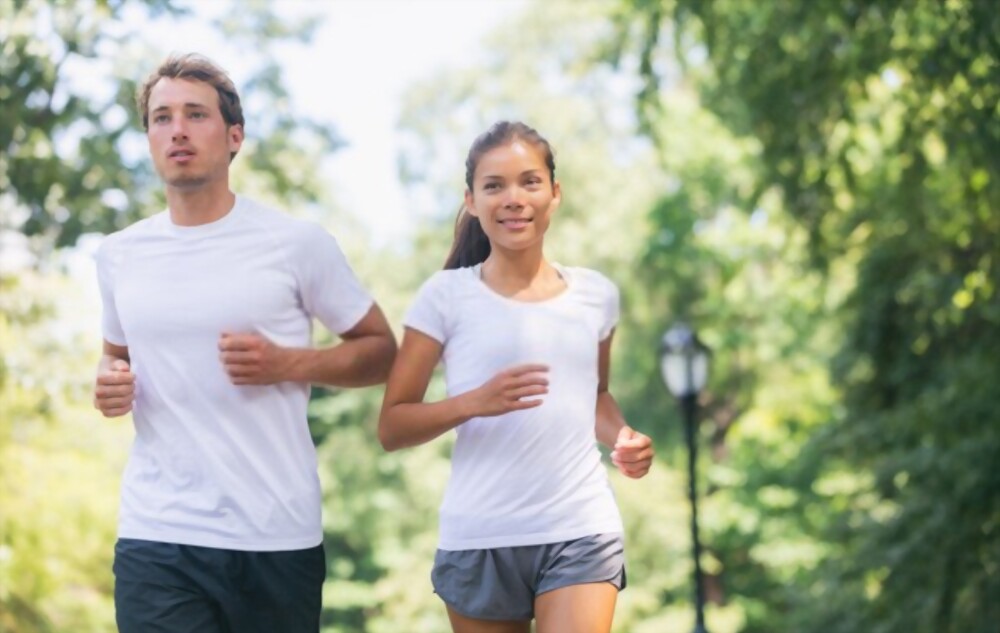
Benefits of Running
Running is a low-impact yet high-returns exercise. It can produce numerous positive effects and benefits on the muscles and joints in your body.
- The most basic advantage of running is that it can help you lose weight. Running alone can help you lose between 1 and 13 pounds of fat combined with dieting. There are many benefits of running with supplements that promote weight loss, such as l-carnitine, chromium picolinate, branched-chain amino acids, and green tea catechins.
- Running can help you burn calories if you have a high-intensity workout. Normally, burning fat requires the exercise of 60-90 minutes at 60% or more of your maximal heart rate. Running follows the same principle. It is a very effective aerobic exercise that burns fat because it keeps your body in high-intensity exercise for a long period.
- Running also strengthens your heart muscle. Your heart comprises four separate muscles, two uppers and two lower.
- Running can help strengthen your bones. When you run, a wave of compressive force travels through the rest of your body when your feet make contact with the ground. This compressive force is what helps build strong and dense bones.
- The impact of running on the ground also helps strengthen your muscles. Since the impact of running is not as severe as in other sports such as football or rugby, it makes running an excellent sport for people with weight problems and previous injuries- especially knee pain.
- Running can also improve balance and coordination. It requires you to be very conscious of your movements, which is why runners often talk about the meditative quality of their sport.
- Running makes you smart! A study shows that running can improve your brain’s gray matter, leading to better cognitive ability.
- Running can help reduce anxiety. According to a study, runners’ cortisol levels went down after running four times a week for three months, and their testosterone levels went up. These changes are what give them increased resilience to stress and anxiety.
Essential Nutrients for Runners
There are some essential nutrients for runners. A class of chemical substances known as amino acids is present in both plants and mammals.
Amino acids
A class of chemical substances known as amino acids is present in both plants and mammals. They’re made up of carbon, hydrogen, oxygen, and nitrogen. Some amino acids (i.e., alanine) can be used by your body as a fuel source during exercise, even during prolonged exercise when muscle glycogen levels become depleted.
Carbohydrates
Carbohydrates are nutrients that combine with water to form sugar. Luckily, they’re the body’s primary fuel source because they’re easy to digest and have a high energy level. That’s why runners need carbohydrates, especially during their long training sessions.
Creatine
Creatine is a type of protein that can be found mostly in animal sources like meat and fish. Creatine is produced naturally in your body during digestion by your kidneys, liver, and muscles. They use creatine to help them recover from the damage caused by exercise.
Vitamin C
Citrus fruits, as well as other fruits and vegetables, contain the water-soluble vitamin C. It carries out a variety of bodily processes, including collagen synthesis and immune system support. Because of its anti-oxidant properties, Vitamin C helps fight illnesses such as colds, flu, and infections.
Omega 3 fatty acids
Omega 3 fatty acids are found in oily fish. There are three types of omega-3 fatty acids: ALA, EPA, and DHA. ALA is an important nutrient for the brain, while EPA and DHA help reduces inflammation.
Magnesium
Magnesium is a mineral in many foods, especially green vegetables, seeds, nuts, and whole grains. It helps with over 300 bodily reactions because it promotes proper nerve and muscle function.
FAQs
Are running shoes necessary?
Running shoes are not only necessary to protect your feet and legs, but they can also help you improve your running efficiency. Running in high-performance shoes that fit properly will ensure you increase your stride frequency.
What is a good pair of running shoes?
Good running shoes are designed for the specific needs of each runner. For nine out of 10 runners, we recommend using the Nike Free 3.0 or the Nike Vaporfly 4% Max Shoes for performance.
How can we prevent deficiencies?
The main way to prevent deficiencies is by taking a multivitamin supplement. One example of a multivitamin for runners is My Multivitamin for Runners.
What clothes to wear for running?
We recommend wearing not too bulky or constricting clothing because this can hamper your movement. We recommend wearing loose-fitting running gear, especially jerseys and tights.
What are the advantages of jogging versus running?
Running is an aerobic exercise, while jogging requires setting a certain pace and maintaining a constant speed. Running can improve your endurance, while jogging will ensure you don’t get tired too quickly.




